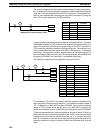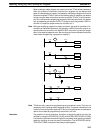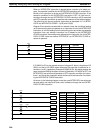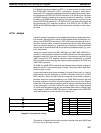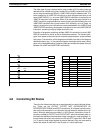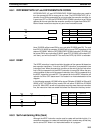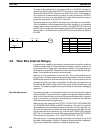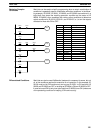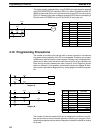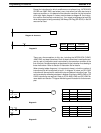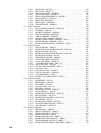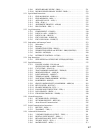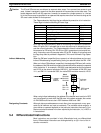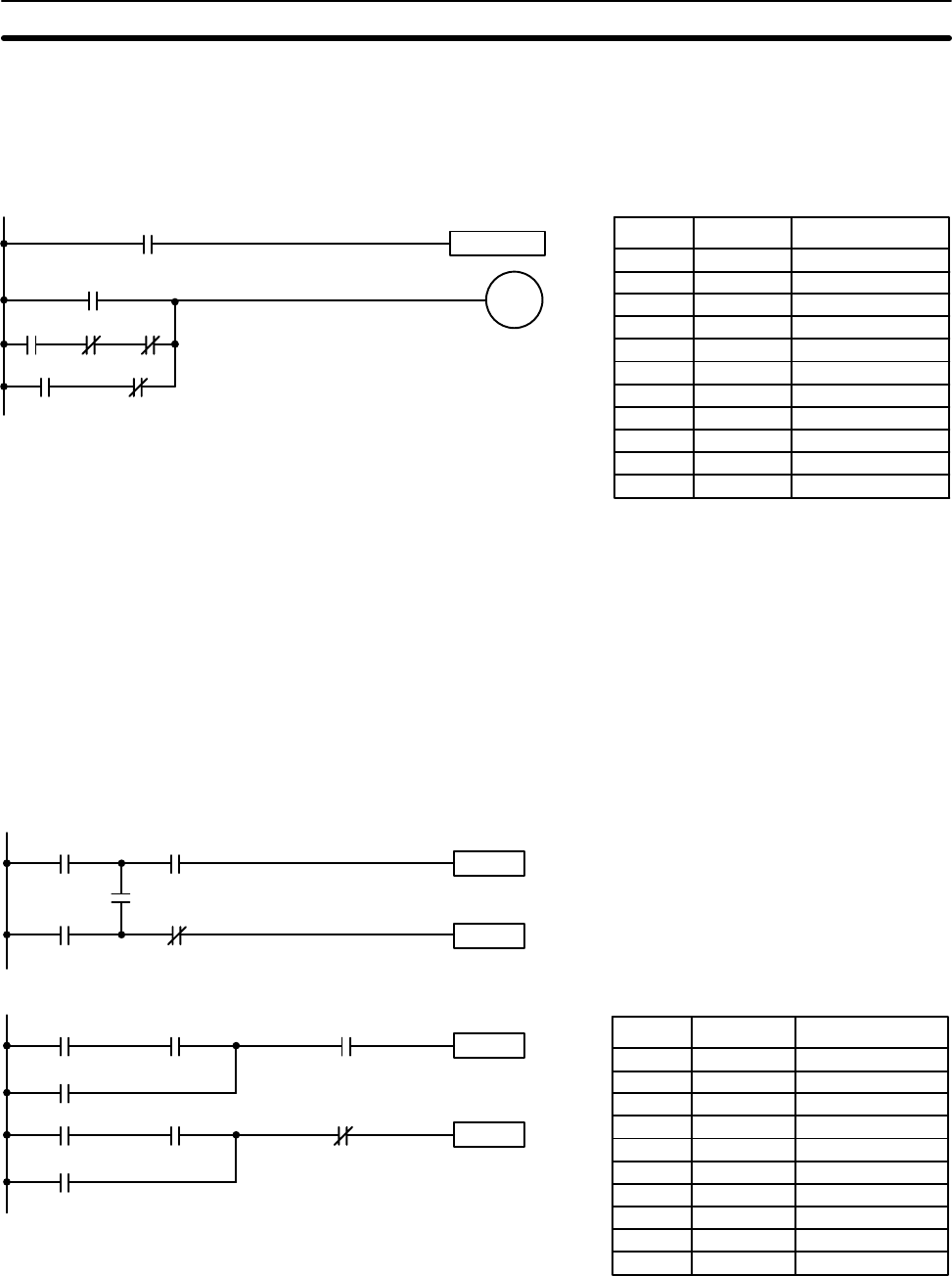
112
This action is easily programmed by using IR 22500 as a work bit as the operand
of the DIFFERENTIATE UP instruction (DIFU(13)). When IR 00000 turns ON, IR
22500 will be turned ON for one cycle and then be turned OFF the next cycle by
DIFU(13). Assuming the other conditions controlling IR 00100 are not keeping it
ON, the work bit IR 22500 will turn IR 00100 ON for one cycle only.
22500
DIFU(13) 22500
00000
00001 00002 00003
00004 00005
00100
Address Instruction Operands
00000 LD 00000
00001 DIFU(13) 22500
00002 LD 22500
00003 LD 00001
00004 AND NOT 00002
00005 AND NOT 00003
00006 OR LD ---
00007 LD 00004
00008 AND NOT 00005
00009 OR LD ---
00010 OUT 00100
4-10 Programming Precautions
The number of conditions that can be used in series or parallel is unlimited as
long as the memory capacity of the PC is not exceeded. Therefore, use as many
conditions as required to draw a clear diagram. Although very complicated dia-
grams can be drawn with instruction lines, there must not be any conditions on
lines running vertically between two other instruction lines. Diagram A shown
below, for example, is not possible, and should be drawn as diagram B. Mne-
monic code is provided for diagram B only; coding diagram A would be impossi-
ble.
00003
Instruction 2
Instruction 1
0000200000
00001
00004
Diagram A
Instruction 1
00004
00003
00000
00001
Diagram B
00002
Instruction 2
0000400000
00001
Address Instruction Operands
00000 LD 00001
00001 AND 00004
00002 OR 00000
00003 AND 00002
00004 Instruction 1
00005 LD 00000
00006 AND 00004
00007 OR 00001
00008 AND NOT 00003
00009 Instruction 2
The number of times any particular bit can be assigned to conditions is not lim-
ited, so use them as many times as required to simplify your program. Often,
complicated programs are the result of attempts to reduce the number of times a
bit is used.
Programming Precautions Section 4-10



